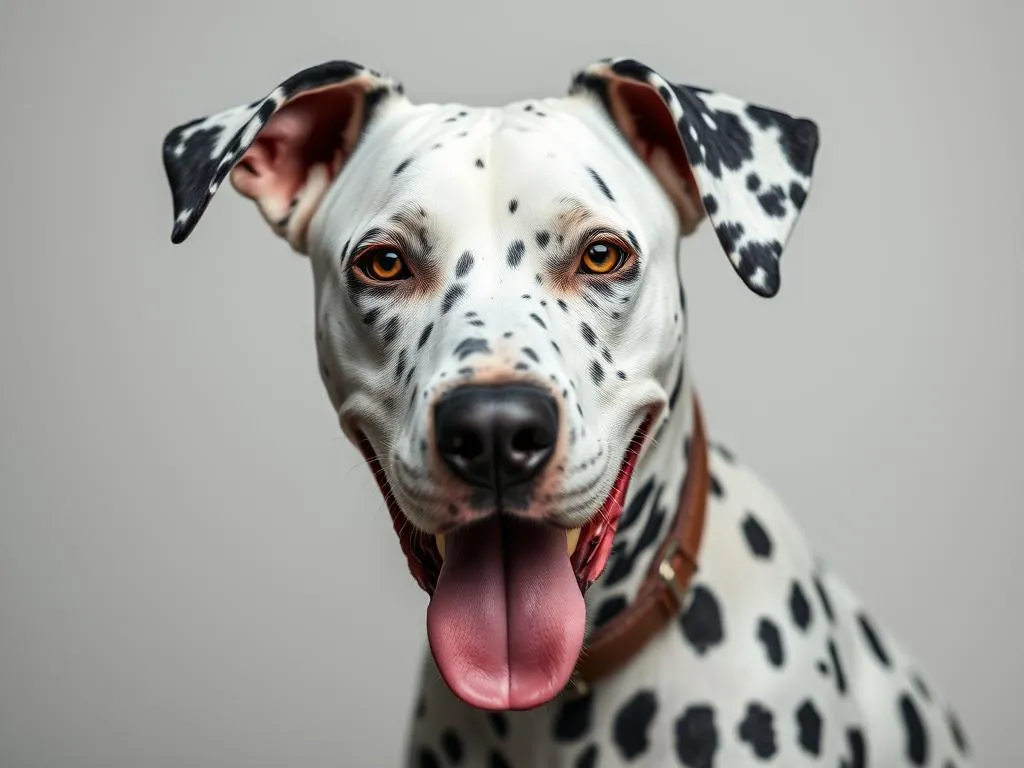
Introduction
The Dalmatian is a breed that captivates dog lovers with its striking appearance and lively personality. Known for its distinctive black or liver-spotted coat, this breed has a rich history and is often associated with firehouses and carriages. However, the world of dogs is not limited to purebreds; mixed breeds can offer unique advantages that enhance the traits of their parent breeds. In this article, we will explore various Dalmatian mixed breeds, examining their characteristics, benefits, and care requirements.
Understanding the Dalmatian Breed
History and Origin
The Dalmatian breed has a storied past that dates back hundreds of years. Originating from the historical region of Dalmatia in Croatia, these dogs were initially bred as carriage dogs, serving as protective companions for travelers. They later became associated with firehouses, where they would run alongside horse-drawn fire engines, helping to clear the way. This unique history has contributed to their energetic and alert nature.
Physical Characteristics
Dalmatians are medium-sized dogs, typically weighing between 45 to 70 pounds and standing 19 to 24 inches tall at the shoulder. Their most notable feature is their short, dense coat adorned with unique black or liver-colored spots. The spots begin to develop shortly after birth, creating a distinctive and eye-catching appearance.
Temperament and Behavior
Known for their playful and friendly disposition, Dalmatians are intelligent and energetic dogs. They thrive on companionship and require ample socialization to prevent boredom, which can lead to destructive behaviors. With a high energy level, they enjoy activities such as running, playing fetch, and participating in agility training.
Health Considerations
Like all breeds, Dalmatians come with their health considerations. Some common issues include deafness, urinary stones, and skin allergies. Their average lifespan ranges from 10 to 13 years, and regular vet check-ups are essential to monitor their health and well-being.
Benefits of Mixed Breeds
Genetic Diversity
One of the primary advantages of Dalmatian mixed breeds is the genetic diversity they offer. Mixing breeds can lead to hybrid vigor, which helps reduce the risk of hereditary diseases that are often prevalent in purebreds. This genetic variation can result in healthier dogs overall.
Enhanced Traits
When Dalmatians are mixed with other breeds, the resulting puppies often exhibit enhanced traits. This may include improved temperament, reduced health risks, and better adaptability to various living environments. The combination of desirable characteristics from both parent breeds can yield a dog that is a perfect fit for many families.
Unique Appearance
Mixed breeds often showcase a variety of physical traits, leading to unique coat colors, patterns, and sizes. A Dalmatian mixed breed may inherit the classic spotted pattern or take on the appearance of the other parent breed, creating a one-of-a-kind look.
Popular Dalmatian Mixed Breeds
Dalmatian and Labrador Retriever
This mix combines the energetic and friendly nature of the Dalmatian with the loyalty and intelligence of the Labrador Retriever. Dalmatian Lab mixes tend to be playful and sociable, making them great family pets.
Pros:
– Friendly and good with children
– Intelligent and easy to train
Cons:
– Needs regular exercise to burn off energy
– May inherit some health issues from both breeds
Dalmatian and Boxer
The Dalmatian Boxer mix offers a fun-loving and spirited companion. Boxers are known for their playful nature, and when mixed with Dalmatians, they create a lively and affectionate dog.
Pros:
– Highly social and playful
– Protective instincts
Cons:
– Can be stubborn and require consistent training
– May have higher energy levels that need to be managed
Dalmatian and Poodle
Mixing a Dalmatian with a Poodle results in a Dalmatian Poodle mix that often has a unique coat, which may be hypoallergenic depending on the Poodle’s genetics. This mix combines intelligence and playfulness.
Pros:
– Intelligent and trainable
– Low-shedding coat for those with allergies
Cons:
– Requires regular grooming
– Can inherit stubbornness from the Poodle side
Dalmatian and German Shepherd
The Dalmatian German Shepherd mix is known for its strength and intelligence. This mix can produce a loyal and protective companion that is also highly trainable.
Pros:
– Excellent guard dog qualities
– Highly trainable and intelligent
Cons:
– Requires consistent training and socialization
– Can be prone to health issues associated with both breeds
Dalmatian and Beagle
The playful nature of the Beagle mixed with the distinctive Dalmatian creates a Dalmatian Beagle mix that is both friendly and curious. This mix is great for families who enjoy outdoor activities.
Pros:
– Friendly and great with children
– Curious and playful demeanor
Cons:
– May have a strong prey drive due to Beagle genetics
– Requires regular exercise and mental stimulation
Other Notable Mixes
There are many other Dalmatian mixed breeds worth mentioning, including those mixed with breeds like the Rottweiler, Bulldog, and Cocker Spaniel. Each mix offers its unique blend of traits, making them special in their own right.
Care and Training of Dalmatian Mixed Breeds
General Care Requirements
Taking care of a Dalmatian mixed breed involves understanding their specific needs, which can vary based on the other breed in the mix. However, some general care guidelines apply:
- Nutrition: A balanced diet tailored to their age, size, and activity level is crucial. High-quality dog food should be prioritized to ensure they receive essential nutrients.
- Exercise: Dalmatians and their mixes are active dogs that require daily exercise. Regular walks, playtime, and mental stimulation are essential to keep them happy and healthy.
Training Tips
Training a Dalmatian mixed breed can be rewarding, but it requires patience and consistency. Here are some helpful tips:
- Early Socialization: Introducing your dog to different people, environments, and other pets at a young age helps prevent behavioral issues later on.
- Positive Reinforcement: Use treats and praise as rewards during training sessions to encourage good behavior. This method is highly effective with intelligent breeds like Dalmatians.
Health Maintenance
Regular health maintenance is vital for Dalmatian mixed breeds:
- Vet Check-ups: Schedule routine vet visits to monitor your dog’s health and catch any potential issues early.
- Vaccination and Grooming: Keep vaccinations up to date and establish a grooming routine. Depending on the mix, grooming needs may vary, so be prepared to adjust accordingly.
Choosing the Right Dalmatian Mixed Breed for You
Assessing Lifestyle Compatibility
Before bringing a Dalmatian mixed breed into your home, consider your lifestyle:
- Space: Ensure you have enough space for a larger dog, especially if they’re energetic and require room to play.
- Activity Level: If you lead an active lifestyle, a Dalmatian mix may be perfect. However, if you prefer a quieter home, consider a mix that is more laid-back.
Finding a Reputable Breeder or Rescue
When looking for a Dalmatian mixed breed, it’s important to find a responsible source. Here are some tips:
- Research Breeders: Look for breeders who prioritize health screenings and genetic testing. They should be transparent about the health history of both parent breeds.
- Consider Adoption: Many mixed breeds are available through shelters and rescues. This option not only gives a dog a second chance but also often includes dogs that have already been socialized.
Conclusion
With their unique traits, Dalmatian mixed breeds can offer a wonderful blend of characteristics that suit various lifestyles. From their energetic nature to their potential health benefits, these mixes can be fantastic companions. If you’re considering adding a furry friend to your family, don’t overlook the joys that a Dalmatian mixed breed can bring.
Frequently Asked Questions (FAQs)
What are the most common health issues in Dalmatian mixed breeds?
Common health concerns can vary depending on the other breed in the mix, but Dalmatians are particularly known for issues like deafness, urinary stones, and skin allergies. Regular vet visits and health screenings can help identify potential issues early.
How can I ensure my Dalmatian mixed breed is well-socialized?
Early socialization is crucial. Expose your dog to various environments, people, and other pets from a young age. Puppy classes and playdates can also be beneficial in developing good social skills.
Are Dalmatian mixed breeds good with children?
Most Dalmatian mixed breeds are known for their friendly and playful nature, making them good companions for children. However, always supervise interactions and teach children how to interact appropriately with dogs.
What is the average lifespan of a Dalmatian mixed breed?
The average lifespan of a Dalmatian mixed breed typically ranges from 10 to 15 years, depending on various factors such as genetics, diet, and overall care.
How can I find a Dalmatian mixed breed for adoption?
Visit local shelters, rescue organizations, and online adoption platforms. Many mixed breeds are in need of homes, and adopting can be a rewarding experience that gives a dog a second chance at life.









